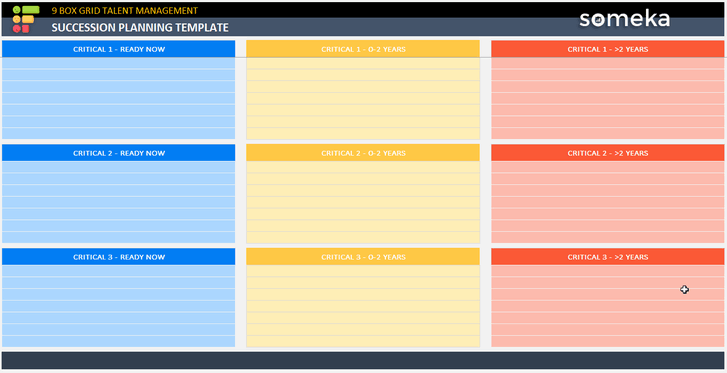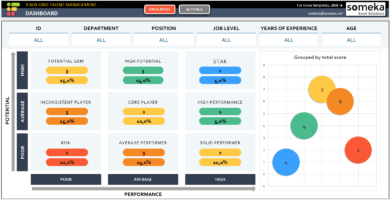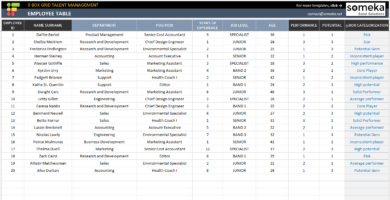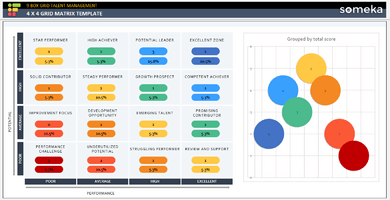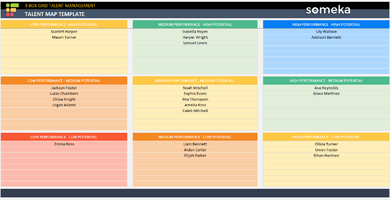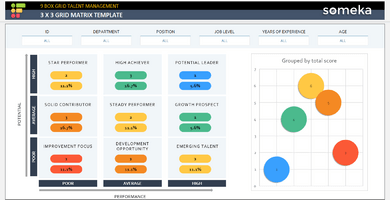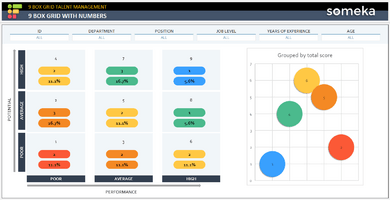Creating a Succession Planning Template is crucial for organizations to ensure a smooth transition in key roles and maintain continuity in leadership and expertise. This template helps identify and develop potential successors for critical positions.
One of the most common tools for succession planning is 9 Box Grid model, created by McKinsey in the 1970s. As a very well-established tool, this model is still used in many corporates for succession plans.
Succession Planning Template Overview
Here are the mains steps for a succession planning:
1. Position Identification:
List key positions for which succession planning is essential. These are typically roles critical to the operation and success of the organization.
2. Current Incumbent Details:
For each key position, include details about the current incumbent such as name, tenure in position, expected retirement or departure date, and key skills or qualifications.
3. Succession Planning Template Criteria:
Define the criteria for selecting potential successors. This may include specific skills, experience, leadership qualities, and other competencies relevant to the role.
4. Potential Successors:
Identify employees who could potentially fill each key role. Include their current position, a brief assessment of their readiness (e.g., ready now, ready in 1-2 years, long-term potential), and any gaps in skills or experience.
5. Development Plans:
For each potential successor, outline a development plan to prepare them for the future role. This could include training, mentoring, stretch assignments, and other development activities.
Risk Assessment and Update Schedule For Effective Succession Planning
Assess the risk associated with each key position. Consider factors like the difficulty of replacing the role, the impact of the departure of the current incumbent, and the readiness of potential successors.
Indicate how frequently the succession plan will be reviewed and updated. Regular reviews ensure the plan remains relevant and aligned with the organization’s changing needs.
Key Features of the Succession Planning Template
- Comprehensive Position Coverage: Includes all critical roles within the organization.
- Incumbent Profile: Details about current incumbents to understand what makes them successful in their roles.
- Successor Identification and Assessment: A list of potential successors with assessments of their readiness and fit.
- Developmental Pathways: Clear plans for developing each potential successor to prepare them for future roles.
- Risk Analysis: Assessment of risks associated with turnover in key positions.
- Dynamic and Adaptable: Designed to be updated regularly to reflect changes in the organization and its workforce.
- User-Friendly Format: Easy to navigate and understand, ensuring that it can be effectively used by HR professionals and senior leaders.
A well-structured Succession Planning Template is a valuable tool for proactive talent management, helping organizations prepare for the future by nurturing and developing their next generation of leaders. It ensures that critical roles are always filled with competent and prepared individuals, thereby safeguarding the organization’s stability and future success.
